Search
for
Sort by
Research
210-240 / 1000+ results
research Mechanical Force Activation of TGF-β Signaling Controls Hair Follicle Regression
Muscle around hair follicles controls hair loss by releasing a signal that causes cell death.

research Reimagining Hair Science: A New Approach to Classify Curly Hair Phenotypes via New Quantitative Geometrical and Structural Mechanical Parameters
A new system for classifying curly hair types using precise measurements can improve hair care products and cultural inclusion.
research Mechanical Anisotropy of Hair Affected by Genetic Diseases Highlights Structural Information Related to Differential Crosslinking in Keratins

research Mechanical Force Drives the Initial Mesenchymal-Epithelial Interaction During Skin Organoid Development
Mechanical force is important for the first contact between skin cells and hair growth in mini-organs.

research Reimagining Hair Science: A New Approach to Classify Curly Hair Phenotypes via New Quantitative Geometrical and Structural Mechanical Parameters
New methods to classify curly hair types were developed based on shape and strength.

research Integration of Biochemical and Mechanical Signals at the Nuclear Periphery: Impacts on Skin Development and Disease
The conclusion is that the nuclear lamina and LINC complex in skin cells respond to mechanical signals, affecting gene expression and cell differentiation, which is important for skin health and can impact skin diseases.
research Mechanical and Controlled PRP Injections in Patients Affected by Androgenetic Alopecia
PRP injections significantly increased hair count and density with less pain.
research Micro-Mechanical Fractional Skin Rejuvenation
The new device safely and effectively rejuvenates skin, making it thicker and healthier.

research Reimagining Hair Science: A New Approach to Classify Curly Hair Phenotypes via New Quantitative Geometric and Structural Mechanical Parameters
New methods can better classify curly hair types and lead to improved hair care products.
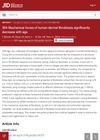
research Mechanical Forces of Human Dermal Fibroblasts Significantly Decrease with Age
Skin cell strength decreases significantly as we age.
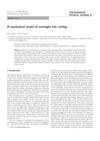
research A Mechanical Model of Overnight Hair Curling
Longer time setting curls overnight leads to better curl retention.
research Structure and Mechanical Properties of Human Trichocyte Keratin Intermediate Filament Protein
Disulfide bonds make keratin in hair stronger and tougher.
research Alleviation of Mechanical Allodynia by 14,15-Epoxyeicosatrienoic Acid in a Central Poststroke Pain Model: Possible Role of Allopregnanolone and Delta-Subunit-Containing Gamma-Aminobutyric Acid A Receptors
14,15-EET may help reduce poststroke pain by affecting certain brain proteins.
research Involvement of Mechanical Stress in Androgenetic Alopecia

research Biological and Mechanical Influence of Three-Dimensional Microenvironment Formed in Microwell on Multicellular Spheroids Composed of Heterogeneous Hair Follicle Stem Cells
3D microenvironments in microwells improve hair follicle stem cell behavior and hair regeneration.
research Improving The Mechanical Properties Of Damaged Hair Using Low-Molecular Weight Hyaluronate
Low-molecular weight hyaluronate can make damaged hair stronger.

research Metformin Promotes Mechanical Stretch-Induced Skin Regeneration by Improving the Proliferative Activity of Skin-Derived Stem Cells
Metformin helps improve skin regeneration by increasing the growth of skin stem cells.

research Characterization of the Mechanical Properties of the Cortex Region of Human Hair Fibers by Multiparametric Atomic Force Microscopy Mapping
Atomic Force Microscopy is a more accurate way to assess hair damage and the effect of cosmetic treatments.
research Desmoglein 3-Mediated Mechanical Transadhesion Controls Epithelial Stem Cell Quiescence
Desmoglein 3 is important for keeping hair follicle stem cells inactive and maintaining their special properties.
research Comparative Study of Mechanical and Microstructural Properties of Interlocking Concrete Blocks Reinforced with Chicken Feather Fiber and Blend of Chicken Feather Fiber/Synthetic Hair Fibers
research Study of the Structural-Mechanical Properties of Cream with Minoxidil
The 2% minoxidil cream is stable, spreads well on the skin, and helps with hair growth.

research Keratin Network Modifications Lead to the Mechanical Stiffening of the Hair Follicle Fiber
Changes in keratin make hair follicles stiffer.
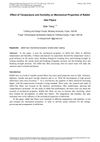
research Effect of Temperature and Humidity on Mechanical Properties of Rabbit Hair Fibers
Higher temperatures improve rabbit hair strength up to 50°C, but moisture weakens it.
research The Roles of WNT Signaling Pathways in Skin Development and Mechanical-Stretch-Induced Skin Regeneration
WNT signaling is crucial for skin development and healing.
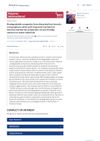
research Biodegradable Composite from Discarded Hair Keratin and Graphene Oxide with Improved Mechanical, Thermal, and Barrier Properties: An Eco-Friendly Solution to Waste Materials
The keratin-graphene oxide composite is stronger, more heat resistant, and better at blocking gases than pure keratin, offering an eco-friendly use for waste hair.

research Effect of a Keratin Coupling Agent on the Mechanical Properties of a Bovine Hair-Thermoplastic Starch Composite
Adding keratin to a mix of cow hair and plant-based plastic makes it stronger.

research The Effect of Coconut Oil on the Physical-Mechanical Property and the Micromolecular Structure of Human Hair
Coconut oil helps protect and improve damaged hair.
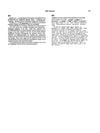
research Effect of 1α,25-Dihydroxyvitamin D3 on Mechanical Properties of Hairless Mouse Skin
Vitamin D3 applied to mouse skin caused more wrinkles and sagging due to changes in the skin's outer layer.
research Bidirectional Binding Property of High Glycine–Tyrosine Keratin-Associated Protein Contributes to the Mechanical Strength and Shape of Hair
High glycine–tyrosine keratin-associated proteins help make hair strong and maintain its shape.